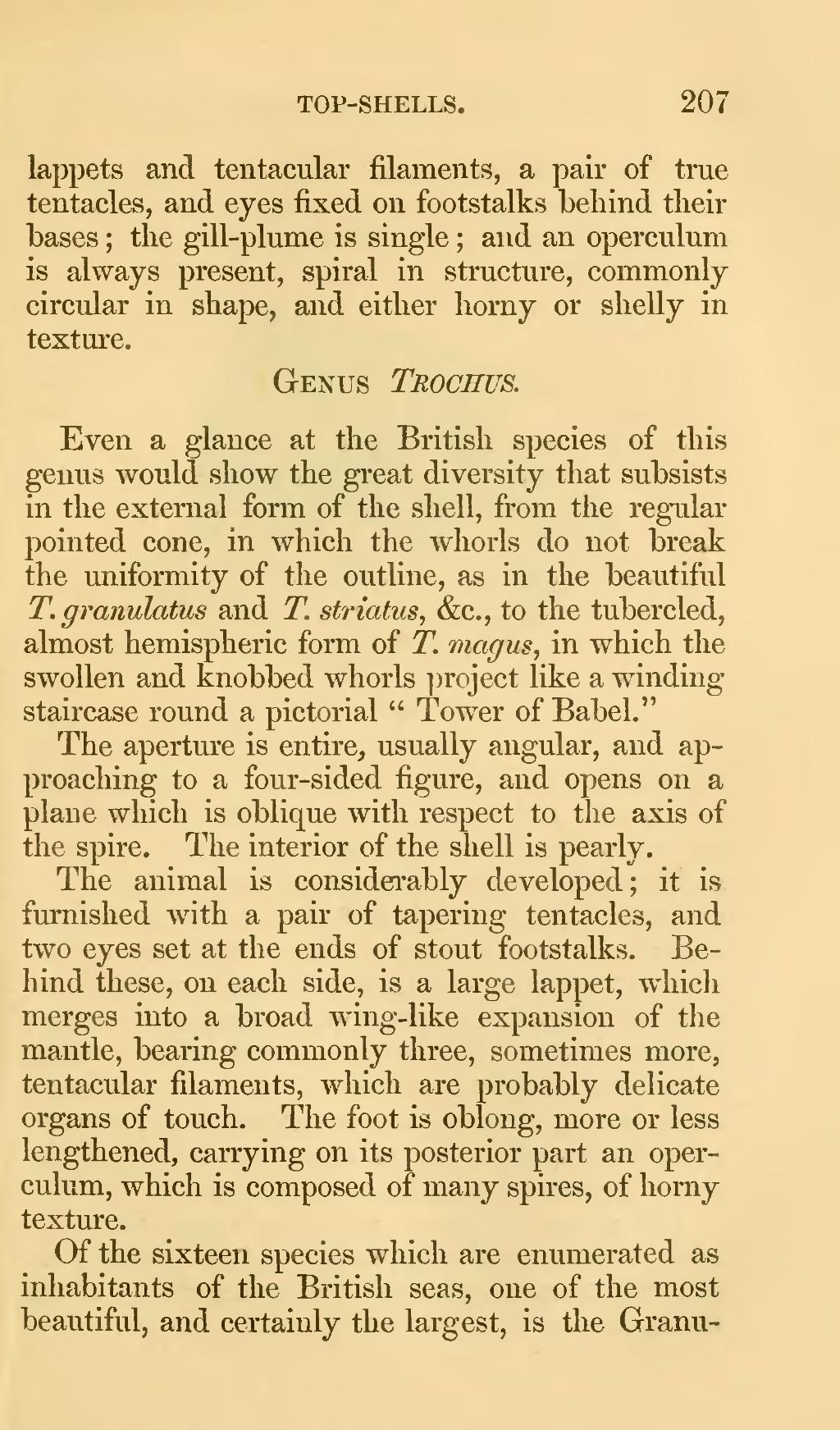lappets and tentacular filaments, a pair of true tentacles, and eyes fixed on footstalks behind their bases; the gill-plume is single; and an operculum is always present, spiral in structure, commonly circular in shape, and either horny or shelly in texture.
Genus Trochus.
Even a glance at the British species of this genus would show the great diversity that subsists in the external form of the shell, from the regular pointed cone, in which the whorls do not break the uniformity of the outline, as in the beautiful T. granulatus and T. striatus, &c., to the tubercled, almost hemispheric form of T. magus, in which the swollen and knobbed whorls project like a winding staircase round a pictorial "Tower of Babel."
The aperture is entire, usually angular, and approaching to a four-sided figure, and opens on a plane which is oblique with respect to the axis of the spire. The interior of the shell is pearly. The animal is considerably developed; it is furnished with a pair of tapering tentacles, and two eyes set at the ends of stout footstalks. Behind these, on each side, is a large lappet, which merges into a broad wing-like expansion of the mantle, bearing commonly three, sometimes more, tentacular filaments, which are probably delicate organs of touch. The foot is oblong, more or less lengthened, carrying on its posterior part an operculum, which is composed of many spires, of horny texture.
Of the sixteen species which are enumerated as inhabitants of the British seas, one of the most beautiful, and certainly the largest, is the Granu-
